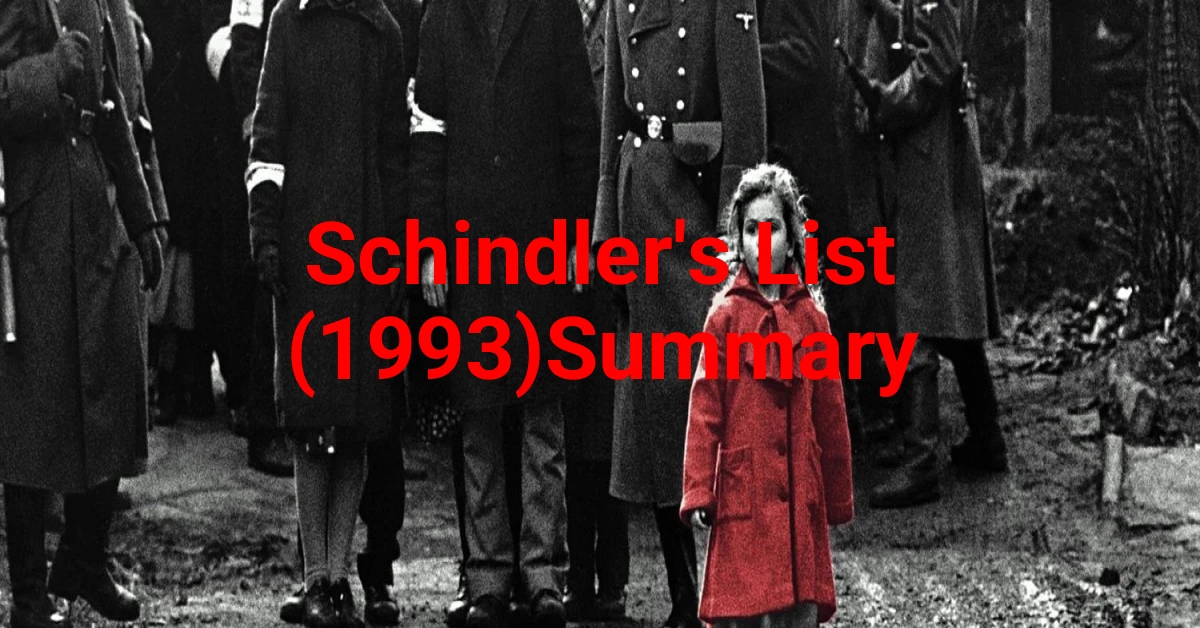Overview of Schindler’s List 1993
Schindler’s List, directed by Steven Spielberg, is a 1993 historical drama that tells the true story of Oskar Schindler, a German industrialist who saved the lives of over a thousand Jewish refugees during the Holocaust. This powerful film captures the atrocities of World War II and the remarkable acts of humanity that emerged in its darkest times. With its stark black-and-white cinematography and poignant storytelling, Schindler’s List remains a timeless classic that continues to move audiences worldwide.
Movie Summary
Act I – The Setup
The film opens in Krakow, Poland, during the early years of World War II. Oskar Schindler, a charismatic and opportunistic businessman, arrives in the city hoping to profit from the war. He quickly establishes relationships with high-ranking Nazi officials, including Amon Goth, the brutal commandant of the nearby concentration camp, Plaszow. As the Nazis intensify their persecution of Jews, Schindler sees an opportunity to exploit cheap Jewish labor to run his factory.
Meanwhile, the Jewish population is forced into the overcrowded Krakow Ghetto, where they endure hunger, disease, and constant fear of deportation to concentration camps. Among them is Itzhak Stern, a skilled accountant who becomes Schindler’s right-hand man in managing his factory. As Schindler witnesses the inhumane treatment of Jews by the Nazis, he begins to slowly shift from a profit-driven businessman to a compassionate savior.
Act II – Conflict and Turning Point
As the war progresses, Schindler’s factory becomes a haven for Jewish workers seeking refuge from the horrors of the concentration camps. Despite facing scrutiny and suspicion from his Nazi associates, Schindler uses his influence and wealth to protect his workers, bribing officials and forging documents to keep them safe. A pivotal moment occurs when Schindler witnesses the liquidation of the Krakow Ghetto and sees the devastating consequences of Nazi cruelty firsthand.
Driven by guilt and empathy, Schindler decides to take a greater stand against the Nazis, using his factory as a means to save as many Jewish lives as possible. With Stern’s assistance, he creates a list of essential workers who are deemed indispensable to the war effort, thus sparing them from deportation to the death camps. Schindler’s transformation from a profiteer to a humanitarian hero reaches its peak as he risks everything to protect those under his care.
Act III – Climax and Resolution
As the war nears its end and the Allies close in on Nazi Germany, Schindler’s efforts to save his workers become more desperate and dangerous. He relocates his factory and remaining workers to Brunnlitz, a subcamp of Auschwitz, where they are shielded from the advancing Soviet forces. In a heart-wrenching climax, Schindler bids farewell to his workers, acknowledging the magnitude of their survival against all odds.
The film’s epilogue reveals the fates of Schindler’s workers, who express their gratitude and reverence for the man who risked everything to save them. Schindler, overcome with emotion and regret, laments that he could have done more to save lives. In a poignant scene, the survivors present Schindler with a gold ring that bears the Talmudic inscription: “Whoever saves one life saves the world entire.”
In the final shot, the actors who portrayed Schindler’s survivors visit his grave, paying tribute to the man who defied the darkness of the Holocaust. Schindler’s List leaves a profound impact on audiences, reminding them of the resilience of the human spirit in the face of unspeakable evil.
Reflecting on this masterpiece of cinema, one cannot help but be moved by the harrowing tale of Oskar Schindler and the countless lives he saved. Schindler’s List stands as a testament to the power of compassion, courage, and the enduring legacy of those who choose to make a difference in the world. If you haven’t seen this film, I highly recommend experiencing its emotional journey for yourself.
Have you seen this film? Share your thoughts below!
